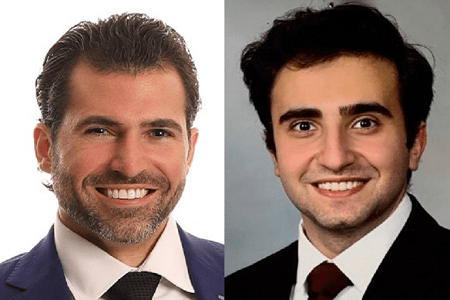
Brian Fiani (Livonia, USA) and Ryan Jarrah (Rochester, USA) take a look at the neurosurgical implications of one of the hottest topics permeating not only the medical industry, but virtually all of society, right now—the natural language processing (NLP) chatbot known as ChatGPT (OpenAI).
Over the last decade, artificial intelligence (AI) and medicine have continuously crossed paths to optimise a physician’s practice and improve patient outcomes. From prognosis prediction calculators to image-based tumour detectors, it is safe to say that AI has revolutionised the current landscape of modern medicine, especially in disciplines like neurosurgery.
One of the most notable AI tools making headlines today is ChatGPT. Also known as GPT 3.5, this NLP chatbot has grown in popularity, especially in the medical field. Among neurosurgeons, ChatGPT’s potential to inform patient decision-making, act as a neurosurgical training tool, and promote neurosurgical research, has seen its stock rise within the community.
Early promise meets skeptic doubt
A recent study from the Huntsman Cancer Institute (HCI; Salt Lake City, USA) assessed if ChatGPT could correctly answer questions about the National Cancer Institute’s (NCI) common myths and misconceptions. Researchers found that ChatGPT answered the questions with 97% accuracy.
Another article published out of Massachusetts General Hospital (MGH; Boston, USA) found that ChatGPT and other NLP systems, such as GPT 4.0, had achieved passing scores on a mock 500-question neurosurgical written board exam. However, these impressive results are not met without limitations.
The HCI study found that, although ChatGPT had answered with high accuracy, the language of answers was often vague, unclear and indecisive. Moreover, with the MGH study, it was determined that ChatGPT did not perform well with questions with greater word length and higher-order problem-solving.
Where do we stand?
Despite the rapid progressions of AI chatbot systems, the compassion, touch, communication and judgment involved in a physician’s training will remain components that are unlikely to be replaced by AI.
A neurosurgeon’s craft is rejuvenated by the incorporation of humanistic values in medicine, as certain factors—such as safety, ethical compliance, and a holistic investment into a patient’s history and wellbeing—cannot be trained into an AI algorithm.
This would imply that patients should speak to their provider for medical guidance regarding the majority of their health concerns. Hence, it is important to recognise where AI could be used in neurosurgery and where its application will be limited.
Current applications in neurosurgery
Despite the current limitations, physicians should be aware of technologies like ChatGPT, because they do show great potential for augmenting clinical practice—particularly in three key areas.
The first of these is surgical education. Risk identification of patients, surgical planning, explanation of surgical procedures, patient triage and research are all aspects of neurosurgery that ChatGPT may support. ChatGPT could be used in neurosurgical training to help create robust, step-by-step surgical plans; explain complex neuropathological diseases; or inform preoperative or postoperative surgical plans. While it may be premature to consider taking ChatGPT to the operating room, further development of ChatGPT could be very useful for neurosurgical training and enhancing education models.
Patient Engagement is also vital to consider. From a patient’s standpoint, ChatGPT could be used to help patients engage with their medical team by answering lingering or last-minute questions rapidly, as well as providing reminders for upcoming appointments, supplying pre-and postoperative instructions, and monitoring patient symptoms. The conversational nature of ChatGPT could help with informing patients about their conditions, while also creating opportunities for effective telemedicine consultations.
The third area of note is neurosurgical research. In the realm of research, ChatGPT could assist in creating literature reviews by analysing large amounts of neurosurgical data and extracting relevant information. ChatGPT could find patterns and correlations in data leading to new understandings of neurosurgical trends. For example, one may quickly be able to determine the correlation between selected patient demographics and 30-day complications after spine surgery using AI systems. ChatGPT could also be used for the recruitment of clinical trials by filtering patients for eligibility criteria while also quickly answering questions regarding clinical trial rules and regulations.
Plans for the future
It would take ChatGPT several years of training through physician notes, images and operating records before it could be reliably used in a clinical setting. The future may see ChatGPT improve communication between surgeons and operating room staff, provide intraoperative patient monitoring, or quickly detect imaging results.
Current efforts are already experimenting to incorporate ChatGPT into the electronic health record, creating a workflow where physicians can spend more time with the patient. ChatGPT has already shown an impressive number of clinical applications and neurosurgeons should strive to leverage the benefits of AI appropriately.
With further precision and efficiency, we can expect ChatGPT to have an expanded role in neurosurgery, and beyond, for generations to come.
Brian Fiani is a neurosurgeon at Mendelson Kornblum Orthopedics and Spine Specialists in Livonia, USA.
Ryan Jarrah is a clinical trial coordinator at the Mayo Clinic in Rochester, USA.
The authors declared no relevant disclosures.













